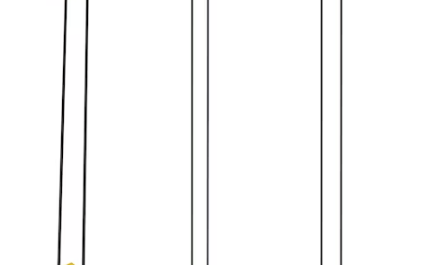
Introduction
Back injuries are among the most common work-related injuries, and they can have long-lasting effects on your overall health, productivity, and quality of life. Whether you work in construction, a warehouse, or an office, lifting and moving objects is often part of your daily routine. Understanding and applying proper lifting techniques is crucial to preventing back injuries. This safety talk will cover the basics of back care and proper lifting methods to help you avoid injury and maintain a healthy spine.
Understanding the Back
The spine is a complex structure made up of vertebrae, discs, muscles, ligaments, and nerves. It supports the body’s weight, allows movement, and protects the spinal cord. When lifting heavy or awkward objects incorrectly, you put excessive strain on your back, particularly on the lower lumbar region, which is most prone to injury. Common back injuries include muscle strains, herniated discs, and chronic lower back pain, which can result from poor lifting techniques and repeated stress on the back.
Why Back Care Matters
Back injuries are not only painful but can also lead to long-term disabilities. They account for a significant percentage of work-related injuries, leading to lost workdays and increased healthcare costs. Proper back care and lifting techniques are essential for:
1. Preventing Injury: Using correct lifting methods reduces the risk of injury, especially to the lower back.
2. Promoting Longevity: Proper back care ensures that you can continue working without chronic pain or disability.
3. Enhancing Productivity: When you avoid injury, you maintain your ability to perform tasks efficiently and safely.
Common Causes of Back Injuries
Understanding the common causes of back injuries can help you avoid them. Some of the most frequent causes include:
1. Lifting Heavy Loads: Trying to lift objects that are too heavy for your strength or lifting without assistance.
2. Improper Lifting Techniques: Bending at the waist, twisting your body, or using your back instead of your legs to lift.
3. Repetitive Lifting: Constantly lifting objects throughout the day without breaks or proper technique can lead to cumulative stress on the back.
4. Poor Posture: Slouching, hunching, or leaning forward while sitting or standing can weaken back muscles over time.
5. Sudden Movements: Quick, jerky motions while lifting can strain muscles and lead to injury.
Basic Lifting Techniques

To protect your back while lifting, follow these basic guidelines:
1. Assess the Load:
– Before lifting, evaluate the object’s weight and size. If it seems too heavy or awkward, ask for help or use mechanical aids like a dolly or forklift.
– Ensure that the path is clear of obstacles to avoid tripping or sudden stops.
2. Get Close to the Load:
– Stand close to the object with your feet shoulder-width apart for a stable base.
– Keep the object as close to your body as possible to reduce the strain on your back.
3. Position Your Body:
– Squat down by bending your hips and knees, keeping your back straight. This position allows your leg muscles, rather than your back, to do most of the work.
– Avoid twisting your torso. If you need to turn, move your feet to face the direction you want to go.
4. Use Your Legs, Not Your Back:
– As you lift, straighten your legs while keeping your back in its natural curve. Your legs are stronger than your back muscles and are designed to handle the weight.
– Engage your core muscles to provide additional support for your back.
5. Lift Smoothly:
– Lift the object in a smooth, controlled motion. Avoid jerking or using excessive force.
– Hold the object close to your body at waist height, where you have the most control.
6. Set Down the Load Carefully:
– When lowering the object, reverse the lifting process. Squat down by bending your knees and hips, keeping your back straight.
– Place the object down gently, avoiding any sudden release that could strain your back.
Ergonomics and Work Environment
Proper lifting techniques go hand in hand with an ergonomically friendly work environment. Here are some tips to optimize your workspace for back safety:
1. Adjust Workstations:
– Ensure that workstations are at the appropriate height to avoid unnecessary bending or reaching.
– Use adjustable chairs that support your lower back and allow your feet to rest flat on the floor.
2. Organize Tools and Materials:
– Store frequently used items at waist height to reduce the need for bending or reaching.
– Keep heavy objects on shelves between knee and chest height.
3. Take Breaks:
– If your job involves repetitive lifting, take regular breaks to stretch and relieve muscle tension.
– Practice stretching exercises that target your back, shoulders, and legs to improve flexibility and reduce the risk of injury.
4. Use Mechanical Aids:
– Whenever possible, use tools like dollies, carts, or lifting straps to assist with heavy loads.
– Don’t hesitate to ask for help when needed; teamwork can prevent injuries.
Conclusion
Caring for your back is essential for maintaining your overall health and well-being. By practicing proper lifting techniques and being mindful of your work environment, you can significantly reduce the risk of back injuries. Remember, the key to preventing back injuries is to lift smart, not hard. Always assess the load, use your legs, keep the object close to your body, and avoid twisting. Prioritizing back care not only protects you from immediate harm but also ensures long-term physical health and work productivity.
Stay safe, lift wisely, and take care of your back—it’s the backbone of your health!
“Start Your Website Journey Today – Exclusive Hostinger Discounts!”




